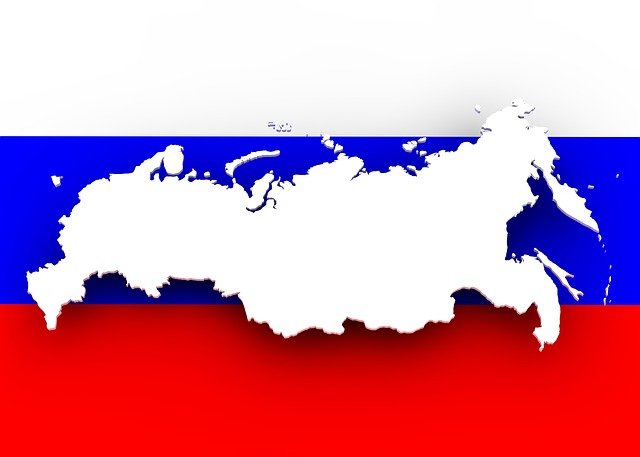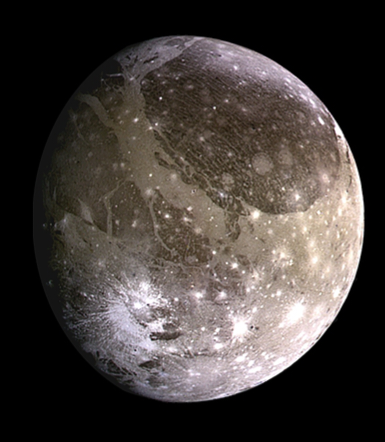*This post may contain affiliate links. This means we may make a commission if you purchase an item using one of our links*
Russia is the biggest country on Earth and also flat land so it makes sense that it wouldn’t really compare in size to Ganymede, which is both spherical and the largest moon in our Solar System.
Ganymede has a surface area of 87.2 million sq. km while Russia’s is far 17.1 million sq. km. In regards to volume Russia’s is 632.7 million cubic km whereas Ganymede’s volume is 76.6 billion cubic km. The only area it exceeds Ganymede is in diameter where Russia’s is roughly 9,000km while Ganymede’s is 5,268km.
For a more detailed look at how big each of these two bodies are continue reading as it’ll be covered in more depth below.
How Big Is Russia?

Based purely on surface area Russia has the most surface area amongst every country in our solar system, which is more than a large a variety moons across our solar system, the likes of which includes Pluto’s largest moon Charon, Uranus’ moon Titania among numerous others.
From east to west Russia encompasses roughly 9,000km, with the entire surface area of the country adding up to roughly 17.1 million km². The end to end length of Russia is more the double that of the moon and 4 times the diameter of Pluto.
Russia also has 2 mountain ranges, which are the Ural Mountains and the Caucasus Mountains which make up a large portion of the countries surface area.
The Ural mountains have a surface area of 2.225 million km² with the overall end to end range of the mountains roughly 2,500km. The northern region of these mountains have mountains that average peaks of around 1,000m so it’s not necessarily the tallest regions in the world but still very tall nonetheless.
As for the Cacasus Mountains, they are far smaller with a surface area of 477,488 km² with the largest mountain in the region called Mount Elbrus with a peak of 5,642m.
in regards to the depth of Russia’s crust, that is estimated to be 37km on average. If we were to multiple Russia’s surface area with the average thickness of the crust, Russia’s overall volume would come out to roughly 632.7 million cubic kilometers.
All of these factors, such as the height of the mountains, to the end to end distance from east to west and thickness of he countries crust add up to make Russia the literal biggest country on Earth and bigger than a fair share of moons that orbit the other planets in our solar system.
How Big Is The Moon Ganymede?

Ganymede is the largest moon of Jupiter and the largest object in our solar system not to be properly classified as a planet. It is the only moon with a magnetic field of its own, and one of the few bodies in our solar system known to possess a magnetosphere.
Ganymede has a diameter of 5,262 km and a surface area of 87,200,000 sq. km. Russia may be bigger in regards to diameter, but its surface area is far vaster because this moon is spherical rather than flat. This gives it an impressive volume of 76,600,000,000 cubic km.
This moon is a source of fascination for scientists, with Hubble observations suggesting it may possess an underground ocean. Potentially, this ocean could contain more water than all the water on Earth combined with a depth of up to 100 km – ten times deeper than the oceans on Earth. This ocean is buried beneath a 150 km ice crust.
The terrain of Ganymede falls into two distinct categories: large, bright ridged regions and older, darker ground. This terrain pattern suggests the moon could have been under significant tension from global tectonic processes.
Galileo Galilei first discovered the moon in January 1610; significant because it was the first time scientists observed an object orbiting a planet other than Earth. And this helped us recognize that the Sun lies at the center of our Universe rather than the Earth.
Ganymede formed from leftover gas and dust that remained after Jupiter’s formation, which means that it is roughly the same age as our solar system – 4.5 billion years old.
Three main layers comprise Ganymede; a metallic core, a surrounding mantle of rock, and a top layer of ice. Computer models simulating Ganymede’s makeup show that more ice and oceans could be sandwiched between these main layers. The Hubble Space Telescope also discovered that the moon might have a thin atmosphere of oxygen.
Ganymede is the seventh moon from Jupiter, which orbits at around 1.070 million kilometers away from its planet. This means that Ganymede takes roughly seven Earth days to orbit its planet. While Ganymede is vast – larger than the planet Mercury – it only possesses half the mass of our closest planet to the Sun, classifying it as a low-density object.
Summary
Russia may be the largest country on all of Earth but, Ganymede is the largest moon in our entire solar system, even bigger than our Moon so, it makes complete sense that it’d absolutely dwarf Russia in size.
After all, all things being equal spherical objects will always be bigger overall than flat land masses, whether it be in regards to surface area and most certainly cubic volume.

